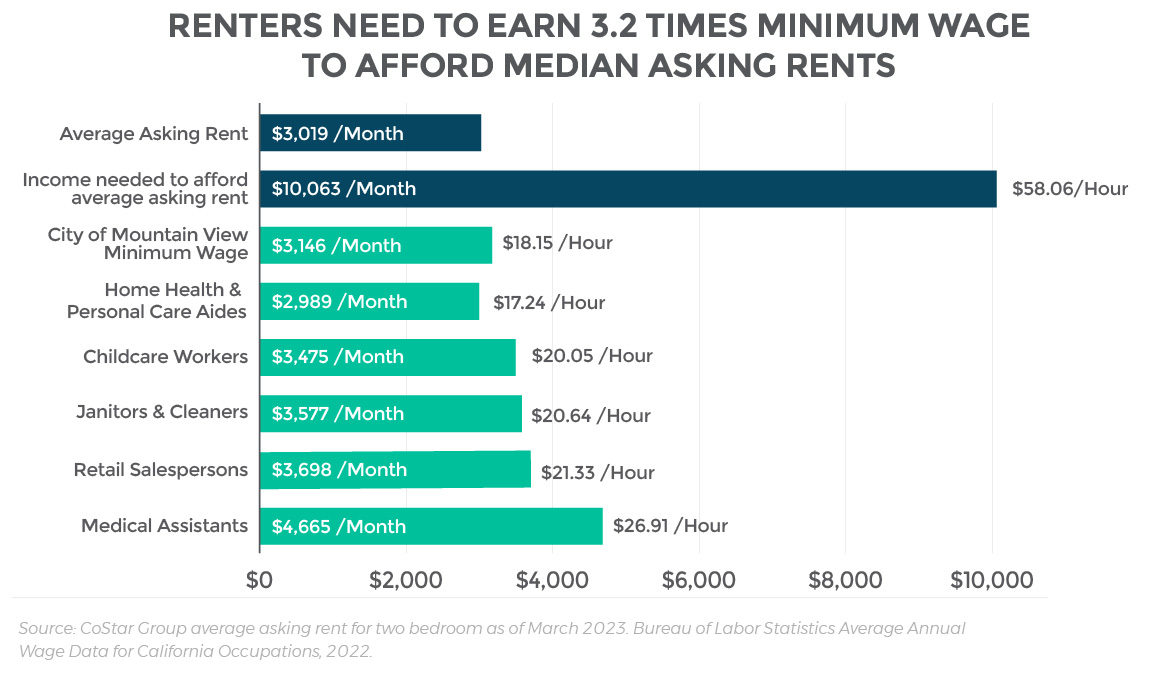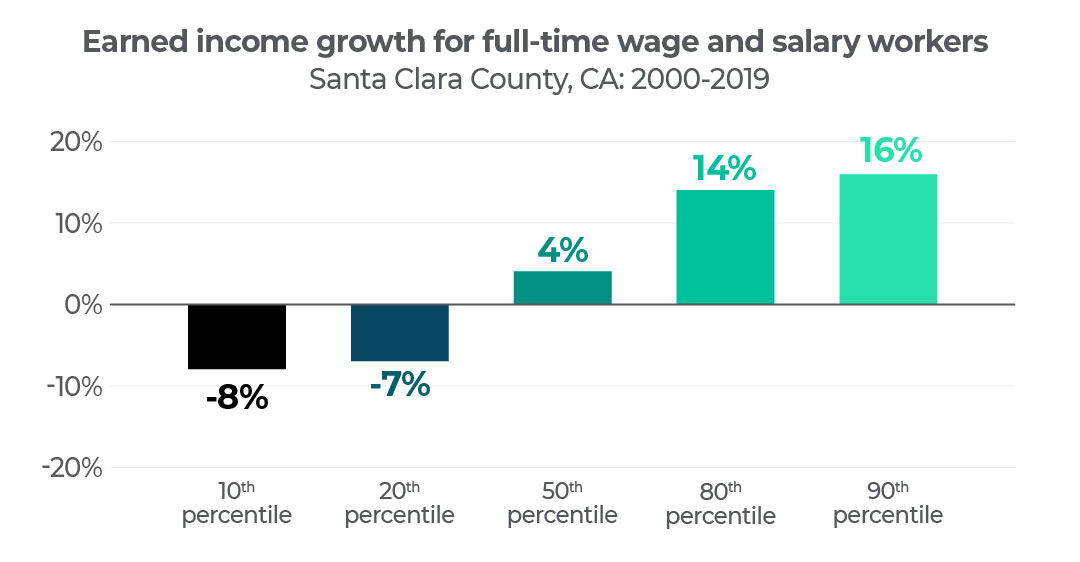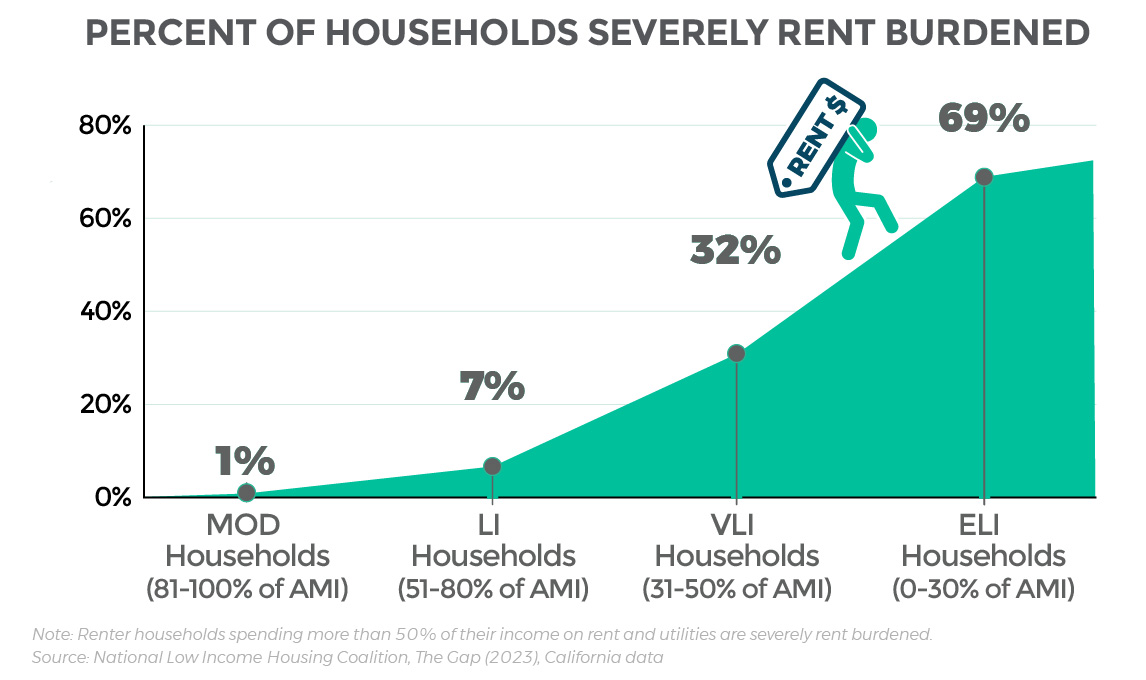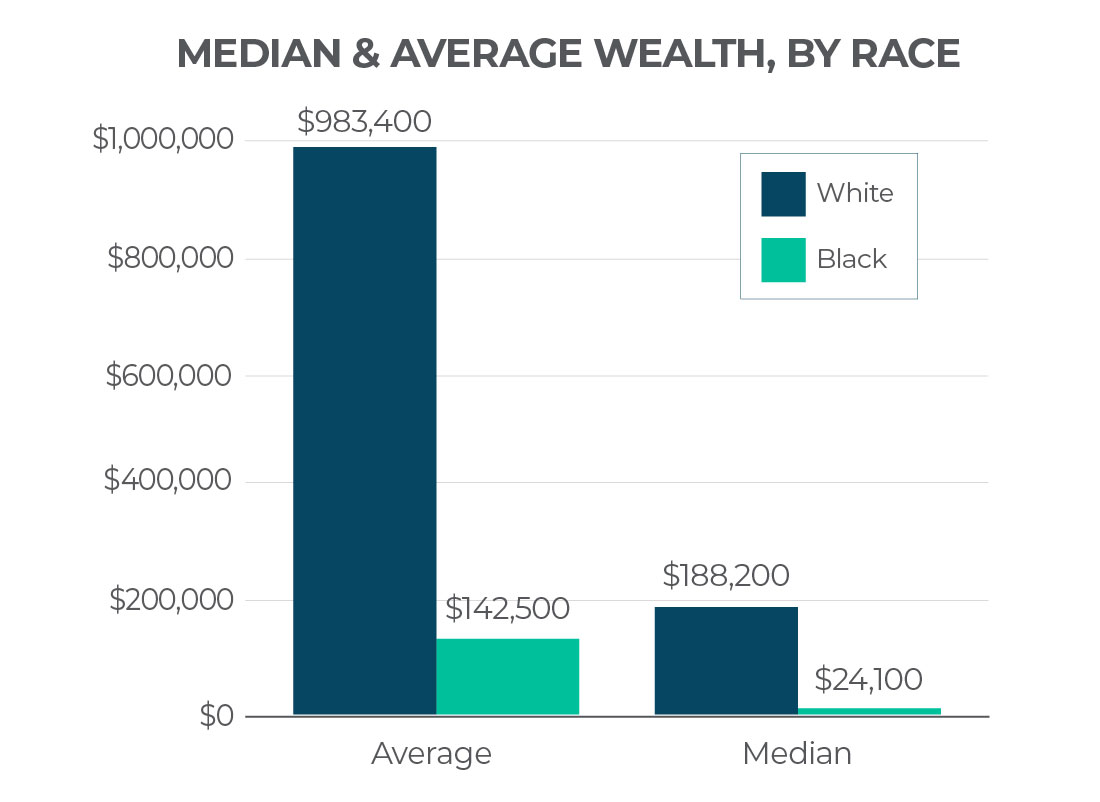Causes of
Homelessness
Despite stereotypes that oversimplify the nature of homelessness, the true causes of homelessness are complex and nuanced. Rather than stemming from any single cause, homelessness is typically the result of several compounding and interrelated factors that vary from person-to-person. And a deeper examination will find that the root causes of homelessness lie in entrenched, long-standing social inequities.
Why Do People Fall into Homelessness?
In surveys conducted during the biannual Point-in-Time Count, homeless individuals report a wide-range of different “primary causes” for their homelessness – none of which came close to representing a majority of individuals: 1While the PIT survey specifically asks respondents to report a ‘primary cause’ It’s also worth noting that many homeless individuals commonly attribute their homelessness to a combination of interrelated or compounding factors.
While the data fails to point to any predominant cause, the most commonly reported factors relate to economic problems or changes in household dynamics. Dispelling the myth that alcohol and drug use are the main drivers of homelessness, we see a significantly higher percentage of people citing a job loss as the primary cause of their homelessness.
These varied responses also reflect that homeless individuals commonly report multiple, compounding factors – rather than one single cause – that ultimately pushed them into homelessness.
The Root Causes of Homelessness in Our Community
“Homelessness is a societal failure, not an individual one. It’s important to distinguish between root causes and individual factors, these issues intersect but are not the root causes.”
Jeff Olivet, U.S. Interagency Council on Homelessness (ICH) Executive Director in Exploring the Systemic Causes of Homelessness
Homelessness is often perceived as the result of a personal or moral failure, but the individual factors that contribute to homelessness are rooted in structural problems plaguing our society. Here, in Santa Clara County, we can point to a few key systemic forces that are pushing even more of our neighbors into homelessness every day:
High Rents And A Lack of Affordable Housing
High Rents And A Lack of Affordable Housing
The single greatest systemic cause of homelessness is a lack of affordable housing.
For decades, Santa Clara County (and the larger Bay Area) has failed to produce enough housing to match the needs of our growing population. This constrained supply has resulted in skyrocketing rents that have made most housing units simply unaffordable for a large segment of residents. In Santa Clara County, a person needs to earn $58.06/hour to afford the average-priced apartment on the market.2California Housing Partnership, “Santa Clara County 2023 Affordable Housing Needs Report.” 2023. https://chpc.net/wp-content/uploads/2023/05/Santa-Clara-County_Housing-Report_2023.pdf
To make matters worse, our community continually falls short of our development targets for subsidized low-income housing units, resulting in a huge shortfall of affordable and available housing in our community – particularly for Extremely Low Income residents (our lowest-income residents earning less than 30% of the area’s median income – or appx. $53,500 for a family of four in Santa Clara County). The National Low Income Housing Coalition estimates that there are only 30 affordable and available rental units for every 100 extremely low income households in our community – leaving our community short 44,093 homes for people experiencing or at the greatest risk of homelessness. 3National Low-Income Housing Coalition, “The Gap: A Shortage of Affordable Homes.” 2023. https://nlihc.org/sites/default/files/gap/Gap-Report_2023.pdf
A growing body of research has proven that it’s this severe lack of housing affordability that is the greatest systemic cause of our homelessness crisis.
For example, a recent U.S. A Government Accountability Office report examining the 20 largest Continuums of Care in the country found a strong correlation between high housing costs and high levels of homelessness – and that a $100/month median rent increase was associated with a 9% increase in homelessness in the areas we examined.4U.S. Government Accountability Office, “Homelessness: Better HUD Oversight of Data Collection Could Improve Estimates of Homeless Population” 2023. gao.gov/products/gao-20-433
Similarly, a Zillow Research report published in 2021 found that communities where people spend more than 32 percent of their income on rent can expect rapid increases in homelessness.5Zillow Research, “Homelessness Rises Faster Where Rent Exceeds a Third of Income”, 2021. https://www.zillow.com/research/homelessness-rent-affordability-22247/?orgid=305&utm_att1=money
Homelessness is a Housing Problem
In their recent book, researchers Gregg Colburn and Clayton Page Aldern analyzed data from communities across the country to see if there was a correlation between levels of homelessness and the many different factors commonly cited as causes. And their research found that communities with high levels of homelessness all suffered from high housing costs and a tight rental market, but no such correlation to high levels of mental health, substance abuse or any other factors they investigated.6Gregg Colburn and Clayton Page Aldern, “Homelessness is a Housing Problem: How Structural Factors Explain U.S. Patterns”, March 2022. https://homelessnesshousingproblem.com/




Rising Economic Inequality
Rising Economic Inequality
Our homelessness crisis has been further compounded by our region’s growing income gap.
Over the past few decades, our region has become a global economic engine that has created enormous wealth for those with high-paying jobs in tech and other major industries. However, our lowest-income workers – including those in the service industry or who rely on minimum wage jobs – have not reaped the same benefits. In fact, Santa Clara County workers at the bottom rungs of the economic ladder have actually seen wages decline over the past two decades. 7Bay Area Equity Atlas, “Earned income growth for full-time wage and salary workers: Santa Clara County, CA, 2000–2019.”
https://bayareaequityatlas.org/indicators/income-growth#/?geo=04000000000006085
According to the Public Policy Institute of California, the wealthiest 10% of families in the Bay Area now have more than 12 times the income of the 10% of families with the lowest incomes in the region. 8Public Policy Institute of California, “Income Inequality in California.” 2020.
https://www.ppic.org/publication/income-inequality-in-california/
This severe income inequality has exacerbated our housing affordability crisis – with the region’s high-wage earners driving the cost of living – and particularly, our exorbitant housing costs – far out-of-reach to our lowest-income workers. In fact, the vast majority of our lowest-income families and individuals are severely rent burdened (meaning they spend more than 50% of their income on rent and utilities).
And as result of this growing divide in our region, tens-of-thousands of our lowest-income neighbors are left perpetually struggling to get by and just one unexpected bill, expense or accident away from homelessness.
Underinvestment in Programs Serving our Most Vulnerable Residents
Underinvestment in Programs Serving our Most Vulnerable Residents
Over the past several decades, policymakers have failed to maintain a strong safety net to support our most vulnerable residents. We’ve continually seen underinvestment, as well as outright spending cuts, to programs that are critical to helping our most vulnerable residents maintain stable housing (i.e. low-income housing subsidies, disability benefits, financial assistance programs).
In the most stark example, a lack of investment in federal housing initiatives has resulted in just one out of four low-income at-risk renters receiving Federal rental assistance:
This lack of investment in our most vulnerable families is even more shameful given that the resources are often shifted towards programs that benefit higher-income individuals. For example, the money spent on the mortgage tax deduction and capital gain exemptions for homeowners far exceeds the federal housing subsidies available for low-income renters. 9Center for Budget and Policy Priorities, “Federal Housing Spending is Poorly Matched to Need.” 2017.
https://www.cbpp.org/research/housing/chart-book-federal-housing-spending-is-poorly-matched-to-need
As a result, our most vulnerable residents have been left without the resources and support needed to maintain stable housing and avoid homelessness.
Systemic & Structural Racism
Systemic & Structural Racism
For communities of color, structural racism accelerates these inequities. Our history of systemic racism – and the way it has prevented people of color from accessing housing, community resources, opportunities for economic mobility and more – continues to play a major role in our homelessness crisis.
For example, decades of discrimination in the housing market have prevented people of color, particularly African Americans, from attaining homeownership and building personal wealth. This has created an enormous racial wealth gap that has sustained over multiple generations. In fact, the average white household has six times more wealth than the average African American household. 10Bhutta, Neil, Andrew C. Chang, Lisa J. Dettling, and Joanne W. Hsu (2020). “Disparities in Wealth by Race and Ethnicity in the 2019 Survey of Consumer Finances,” FEDS Notes. Washington: Board of Governors of the Federal Reserve System, September 28, 2020, https://doi.org/10.17016/2380-7172.2797. https://www.federalreserve.gov/econres/notes/feds-notes/disparities-in-wealth-by-race-and-ethnicity-in-the-2019-survey-of-consumer-finances-20200928.htm
With so much less accumulated wealth available to weather a crisis, it should come as no surprise that African Americans and other people of color are more likely to be extremely low income and so much more susceptible to falling into homelessness. And race continues to shape opportunities for upward mobility in the Bay Area and across the country, even when starting from the same economic standing. Data shows that in 99% of neighborhoods in the United States, black boys earn less in adulthood than white boys, despite both growing up in two-parent families with similar levels of income, wealth, and education.
You can learn more about the root causes of homelessness – and the proven solutions – straight from nationally renowned experts in Exploring the Systemic Causes of Homelessness, a webinar presented by Destination: Home and San Jose Spotlight in celebration of Affordable House Month 2022. Watch it here.
When taken together, these systemic forces have created an environment where a growing number of our neighbors are being pushed into homelessness every day. And while these forces are particularly strong here in the heart of Silicon Valley, they are hardly unique to our community. A growing body of scholars and experts have directly linked a number of these very same factors to our current homelessness crisis in America. 11For a deeper dive into the research on structural causes of homelessness, we recommend browsing the resources on the National Alliance to End Homelessness website:
https://endhomelessness.org
While all of this evidence points to how deeply ingrained homelessness is intertwined to other problems plaguing our society, it also offers a signal of hope: since homelessness is truly the result of our own collective actions as a society, it also means that we have the power to solve this crisis.

























